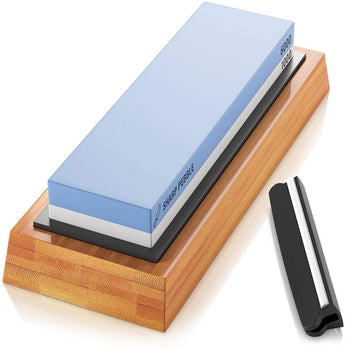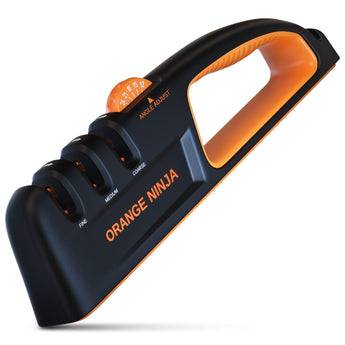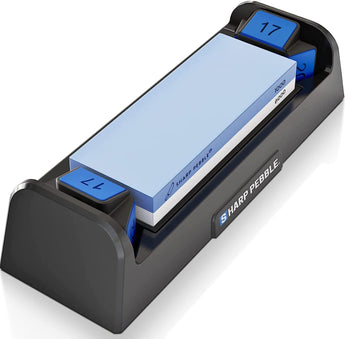
When it comes to keeping your knives in top condition, the tools you use for sharpening can make a significant difference. Two of the most popular methods are using a sharpening stone and a knife sharpener. Both have their advantages and disadvantages, and the choice between them often comes down to personal preference, skill level, and the specific needs of your kitchen.
The Sharpening Stone: Traditional and Versatile
Sharpening stones, also known as whetstones, have been used for centuries. They come in various materials, such as natural stones, synthetic stones, and diamond stones. Each type offers different levels of coarseness and fineness, which can affect the sharpness and longevity of your knives.
Advantages of Sharpening Stones
-
Precision and Control: Sharpening stones allow for a high degree of precision. You can control the angle and pressure applied, which is crucial for achieving a razor-sharp edge. This level of control is especially beneficial for high-quality knives that require meticulous maintenance.
-
Versatility: A sharpening stone can handle various types of blades, from kitchen knives to pocket knives and even scissors. This versatility makes it a valuable tool for those who have a wide range of cutting instruments.
-
Customizable Edge: With a sharpening stone, you can customize the edge of your blade to suit your specific needs. For instance, you can create a more acute angle for a finer, sharper edge or a broader angle for a more durable edge.
-
Longevity: High-quality sharpening stones can last for many years with proper care. They are an investment that can save you money in the long run, as they can be used repeatedly without needing replacement.
Disadvantages of Sharpening Stones
-
Skill and Time: Using a sharpening stone requires practice and patience. It can be time-consuming, especially for beginners who are still learning the correct technique. Achieving a consistent angle and pressure can be challenging without experience.
-
Maintenance: Sharpening stones require maintenance, such as flattening to ensure an even surface. This can be an additional task that some users might find inconvenient.
The Knife Sharpener: Convenience and Efficiency
Knife sharpeners come in various forms, including manual pull-through sharpeners and electric sharpeners. They are designed to be user-friendly and quick, making them a popular choice for home cooks who want an easy and efficient way to maintain their knives.
Advantages of Knife Sharpeners
-
Ease of Use: Knife sharpeners are designed to be straightforward and user-friendly. Most models require minimal effort and skill, making them accessible to anyone, regardless of experience.
-
Speed: One of the main advantages of knife sharpeners is their speed. You can sharpen a knife in a matter of minutes, which is ideal for busy kitchens where time is of the essence.
-
Consistency: Knife sharpeners often come with preset angles, ensuring a consistent edge every time. This can be particularly beneficial for those who struggle with maintaining a steady hand.
-
Safety: Many knife sharpeners are designed with safety features to protect your fingers from accidental cuts. This makes them a safer option for households with children or inexperienced users.
Disadvantages of Knife Sharpeners
-
Limited Precision: While knife sharpeners are convenient, they lack the precision of sharpening stones. The preset angles may not be suitable for all types of knives, especially those with specialized blades.
-
Edge Quality: Knife sharpeners can sometimes remove more material than necessary, which can shorten the lifespan of your knives. The edge created by a sharpener might not be as refined as one achieved with a sharpening stone.
-
Durability: Lower-quality knife sharpeners can wear out quickly and may need to be replaced more frequently than sharpening stones.



